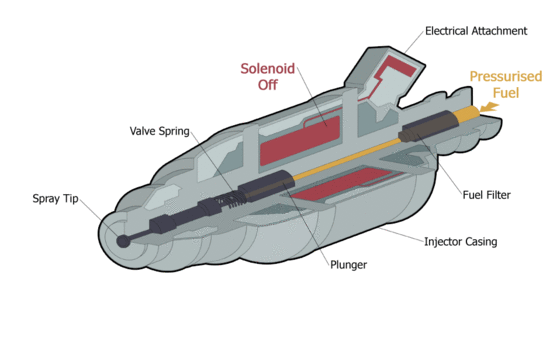Difference between revisions of "Lecture 4."
(→Method of Moments (MoM)CVEL - Electromagnetic Modeling (MoM)) |
(→Method of Moments (MoM)CVEL - Electromagnetic Modeling (MoM)) |
||
| Line 43: | Line 43: | ||
In the 1960s, R.F. Harrington and others applied a technique called the Method of Moments to the solution of electromagnetic field problems. The Method of Moments (also called the Method of Weighted Residuals) is a technique for solving linear equations of the form, | In the 1960s, R.F. Harrington and others applied a technique called the Method of Moments to the solution of electromagnetic field problems. The Method of Moments (also called the Method of Weighted Residuals) is a technique for solving linear equations of the form, | ||
| − | <math>\mathcal{L}( | + | <math>\mathcal{L}(f)=g</math> |
| − | where the functional <math>\mathcal{L}(\bullet)</math> is a linear operator, | + | where the functional <math>\mathcal{L}(\bullet)</math> is a linear operator, <math>g</math> is a known excitation or forcing function, and <math>f</math> is an unknown quantity. To solve this problem on a digital computer, we start by expressing the unknown solution as a series of basis or expansion functions, <math>a_n</math>, |
| − | where | + | <math>f = \sum_{n=1}^{N}a_n f_n</math> |
| + | |||
| + | where <math>f_n</math> are unknown coefficients describing the amplitude of each term in the series. | ||
</blockquote> | </blockquote> | ||
Revision as of 07:38, 23 February 2019
|
Lecture 4. | |
| Animated cut through diagram of a typical fuel injector [1] | Animated cut through diagram of a typical fuel injector [Click to see animation]. |
|
Oktató
|
További oktatók:
|
Contents
A feladat célja
A hallgató megismerje a végeselem-módszer főbb lépéseit, mint a modell előkészítése (geometria elkészítése vagy importálása), anyagparaméterek, peremfeltételek és gerjesztés megadása az üzemanyag befecskendező szolenoidjának szimulációján keresztül.
A feladat megoldásához szükséges ismeretek
- A végeselem-módszer lépései;
- A sztatikus mágneses térre vonatkozó elméleti ismeretek (anyagok definiálásához, gerjesztés megadásához);
- A geometria elkészítéséhez CAD rendszer ismerete.
Boundary Element Method (BEM)[2]
Method of Moments (MoM)[3]
In the 1960s, R.F. Harrington and others applied a technique called the Method of Moments to the solution of electromagnetic field problems. The Method of Moments (also called the Method of Weighted Residuals) is a technique for solving linear equations of the form,
[math]\mathcal{L}(f)=g[/math]
where the functional [math]\mathcal{L}(\bullet)[/math] is a linear operator, [math]g[/math] is a known excitation or forcing function, and [math]f[/math] is an unknown quantity. To solve this problem on a digital computer, we start by expressing the unknown solution as a series of basis or expansion functions, [math]a_n[/math],
[math]f = \sum_{n=1}^{N}a_n f_n[/math]
where [math]f_n[/math] are unknown coefficients describing the amplitude of each term in the series.
